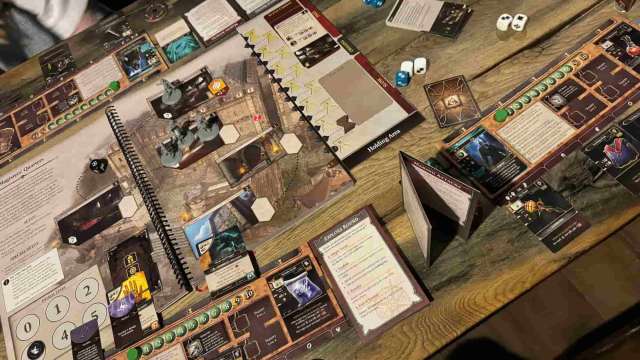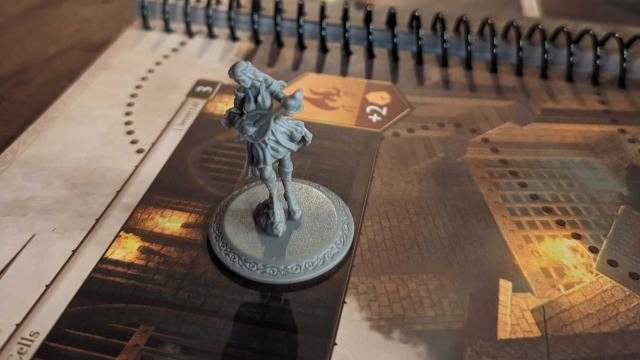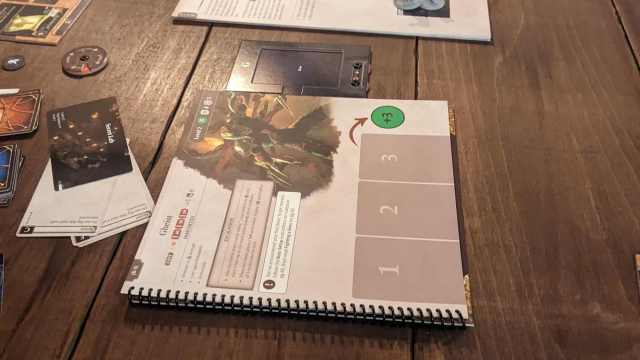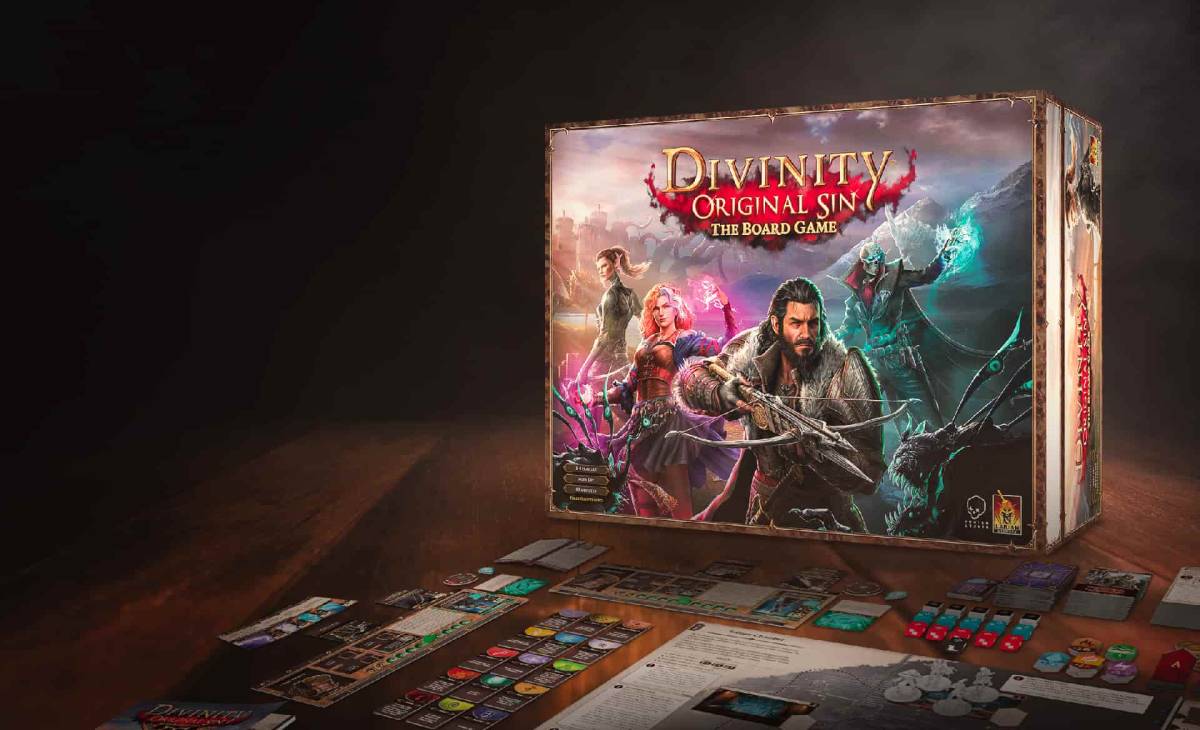Larian Studios may now be synonymous with the critically-acclaimed Baldur’s Gate 3, but with the Belgian studio hanging up its cape on the DnD spin-off, it’s returning to its roots—while trying something entirely new.
Before Larian took the reins on BG3, the studio made its name with Divinity, the tactical RPG series. The last entry, Divinity: Original Sin 2, launched in 2017 to a glowing reception, and while we know the developer has another entry in the works, there’s a long wait ahead.
Fortunately, you don’t need to wait for more juicy Divinity content, as Larian has released its first tabletop game: Divinity Original Sin: The Boardgame. Following a successful Kickstarter campaign, the developer has condensed the expansive world of Rivellon into a (frankly enormous) box while retaining the rich world-building and branching paths the studio is known for. The result is a deep RPG that captures Larian’s key pillars extraordinarily well, but is sure to intimidate tabletop newbies looking to branch out from Baldur’s Gate 3.
A weighty box—and weighty choices

The Divinity Original Sin: The Boardgame box weighs a whopping 8.1kg—approximately the weight of a microwave or coffee table. The contents include a Divine Atlas Book, which acts as your game board, 11 character miniatures, a boss book, 16 dice, and hundreds of cards representing items, skills, locations, and more.
I’m not going to lie. It’s intimidating, but speaking to Dot Esports, Larian’s Publishing Coordinator, Kieron Kelly, reassured us it’s not as scary as it seems. “Once you’re familiar with the base systems at play, you’ll find your moment-to-moment gameplay isn’t all that complex and you can just enjoy the experience.”
The Divinity board game is designed for two to four players, scaling based on your party size. We dropped into a campaign about three hours into the story as a group of three. Our first mission: To enter the Magister’s Quarters in pursuit of a dark figure. Like Larian’s video games, the Divinity board lets you choose how to proceed, with each decision having a variety of outcomes—either immediately or further down the line.
Our first decision was how we wanted to enter the Quarters. Should we rush the main entrance door or climb in through a high-up window? In typical tabletop RPG fashion, these choices rely on dice rolls. While you don’t get as many choices as in Baldur’s Gate 3, choosing the best way to proceed as a party presents an interesting challenge. In our case, we decided to go through the window. The location card demanded a successful dice roll to get through, and of course, the roll failed. Good start.
Fortunately for us, each player gets a Source Token that lets you use the ability on your Source Collar Card—though this is only possible once per location. My Source ability let me reroll the dice, which saved us from a nasty fall.
Once we reached the Quarters, we were met with another decision: Split up to explore or stick together? Having learned nothing from the Scooby Doo gang, we split up and immediately regretted it. Larian clearly doesn’t want you to go your separate ways. Because one of our teammates wandered off, they ended up missing out on powerful loot. When we finally reunited, we chose to stick together for the rest of the adventure.
Stay together for the party

Combat is where teamwork really comes into play. After exploring various rooms within the Quarters, we finally reached the Quarters’ Foyer—and our first Minion encounter.
Two Minions spawned, each with their own cool-looking card holders that let you adjust their health in real-time. As Lohse, a level one Rogue, I only had four Action Points to tackle the foes ahead. Like Divinity: Original Sin and its sequel, your skills cost a certain number of Action Points to use. Your Skill Cards dictate the skills you have available, describing how much damage they deal and their damage type, cooldown period, and dice roll requirement.
You can level up your Skill Cards at the end of each location along with your character, and you can even get new Skill Cards at this point, too. If you’re on the fence about which skills to choose, Kelly recommends you “go with the skills and talents that interest you!”
“If there’s too much choice and you don’t know where to start, go with one of the tutorial builds,” Kelly told Dot. “Just start playing, and as you level up, you can add new skills to fit the playstyle you find yourself in.” As someone who used the tutorial build, I recommend this too.
Between locations, you can also purchase new gear and items with the Gold you’ve earned from your travels, but your Gold is shared among your party, so don’t be greedy.
We weighed up each of our skills and considered how we could combine them for extra damage. I used a Skill Card to make the area wet, then used a lightning Skill Card that caused extra damage in a wet area. Our Undead friend Fane went down, but by sacrificing another party member’s health, we were able to revive him and get him back into the battle. We struggled but managed to achieve victory—and we were still in the early-game.
Don’t underestimate the difficulty of this board game. Not only is it hard to get to grips with, you’ll likely need to revive more than once. Luckily, unlike Dungeons & Dragons, that option is there.
Good eatin’

As challenging as I found Divinity Original Sin: The Boardgame, I thoroughly enjoyed my time with it—but I’ve only just scratched the surface. According to Larian, each location takes around an hour to complete, and you can either stop after finishing the location or continue playing. It takes maybe 20 hours to finish the whole thing. Considering there are 16 bosses and an encyclopedia of a Divine Atlas to work through, I’m not surprised.
Larian’s “choices matter” mentality is evident throughout, and you do feel like you have agency in the choices you make, so it appeals to BG3 fans like myself. As Larian’s first board game, it was important to get this right. “I think there’s a real reason you don’t see many tabletop adventure games of this type make these massive branching paths in their narrative,” Kelly told Dot Esports. “You’ve got to make sure the choices feel worthwhile, so the game feels reactive, and so each branch is at least as interesting as the others, with varied gameplay and narrative results.”
Divinity Original Sin: The Boardgame is intimidating at first, especially for players new to the series or tabletop. But once you get your head around it, a vast, complex, and rewarding RPG awaits.


